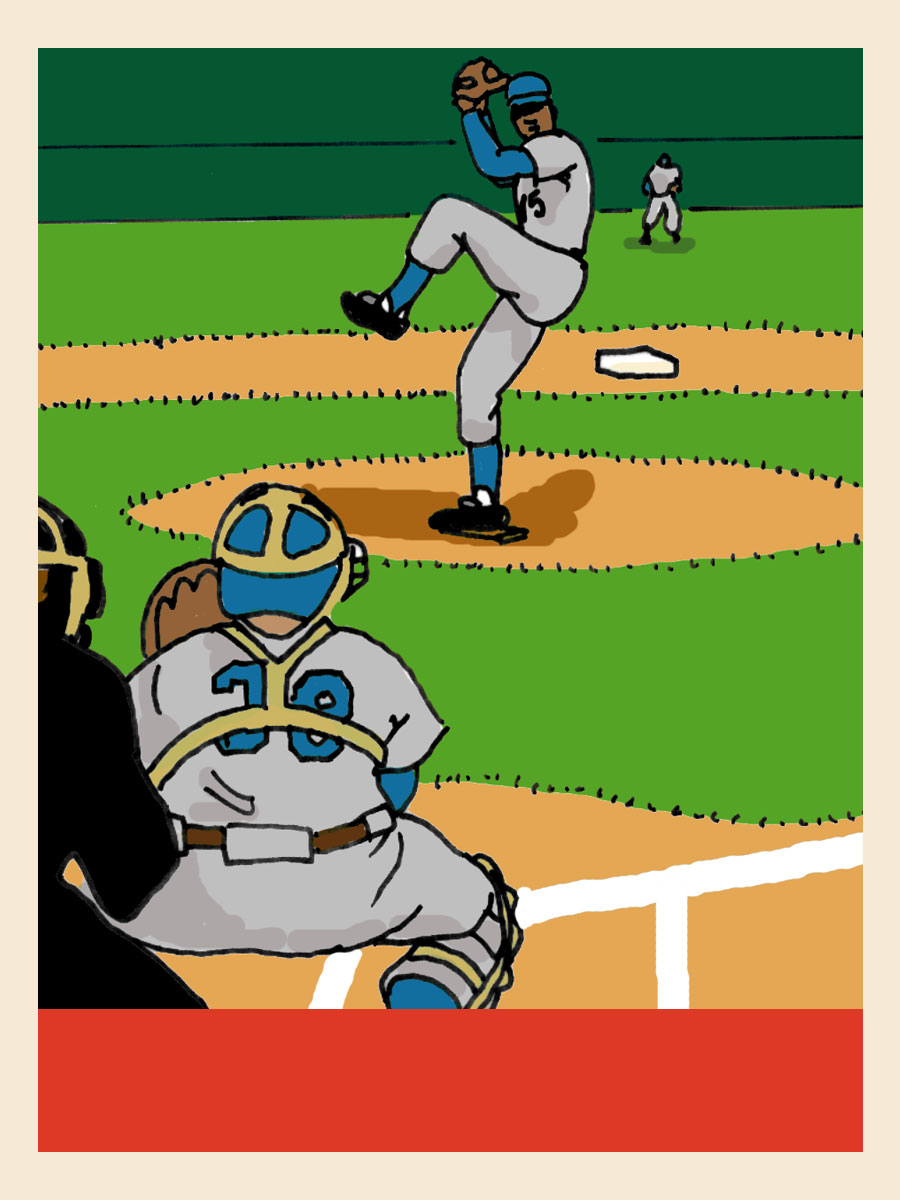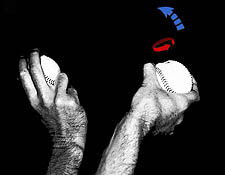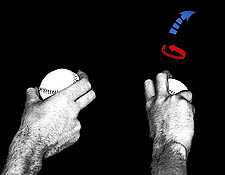
Thrown For a Curve
Every major league pitcher has a variety of pitches in his arsenal. Years of practice and trial and error go into perfecting these pitches. You may have tried to throw a curveball or a slider, or even a screwball, with an ordinary baseball and found it difficult to do. We've found that it's much easier to throw these pitches and observe the results by throwing a Styrofoam ball.
What You Need
- A baseball-sized Styrofoam ball
Directions
Try to throw the various pitches below.
Pitches

Fastball: Hold the ball near the ends of your fingers and throw with a normal overhand delivery. The ball should roll off your fingers with a backwards spin (it will tend to rise). Outfielders usually throw the ball this way because the rising action allows them to throw it considerably farther.

Curveball: "Choke" the ball (wedge it down between your thumb and forefinger), and cock your wrist to the left; the ball snaps down and to the right on release. The resulting pitch should drop and curve to the left. Experiment with different speeds and spins.

Screwball: Throw the ball like a curveball, but reverse the wrist action and spins. Cock the wrist initially to the right and "turn the ball over" to the left as you throw it. The ball should break down and to the right.

Slider:
Throw the ball like a football pass, with the wrist cocked at a 90 degree angle. The ball should curve slightly down and to the left.
Note: The slider ball is not recommended for players under age 18 -- some coaches and trainers state 21 and over. Damage to forearm connective tissue can be serious if the pitch is thrown too often.
What's Going On?
The secret to understanding a curveball is the speed of the air moving past the ball's surface. As the ball spins, its top surface moves in the same direction in which the air moves. At the bottom of the ball, the ball's surface and the air move in opposite directions. So the velocity of the air relative to that of the ball's surface is larger on the bottom of the ball.
What difference does that make? The higher velocity difference puts more stress on the air flowing around the bottom of the ball. That stress makes air flowing around the ball "break away" from the ball's surface sooner. Conversely, the air at the top of the spinning ball, subject to less stress due to the lower velocity difference, can "hang onto" the ball's surface longer before breaking away.
As a result, the air flowing over the top of the ball leaves it in a direction pointed a little bit downward rather than straight back. As Newton discovered almost three hundred years ago, for every action there is an equal and opposite reaction. So, as the spinning ball throws the air down, the air pushes the ball up in response. A ball thrown with backspin will therefore get a little bit of lift.
A major league curveball can veer as much as 17 1/2 inches from a straight line by the time it crosses the plate. Over the course of a pitch, the deflection from a straight line increases with distance from the pitcher. So curveballs do most of their curving in the last quarter of their trip. Considering that it takes less time for the ball to travel those last 15 feet (about 1/6 of a second) than it takes for the batter to swing the bat (about 1/5 of a second), hitters must begin their swings before the ball has started to show much curve. No wonder curveballs are so hard to hit.
One important difference between a fastball, a curveball, a slider, and a screwball is the direction in which the ball spins. (Other important factors are the speed of the pitch and rate of spin.) Generally speaking, a ball thrown with a spin will curve in the same direction that the front of the ball (home plate side, when pitched) turns. If the ball is spinning from top to bottom (topspin), it will tend to nosedive into the dirt. If it's spinning from left to right, the pitch will break toward third base. The faster the rate of spin, the more the ball's path curves.